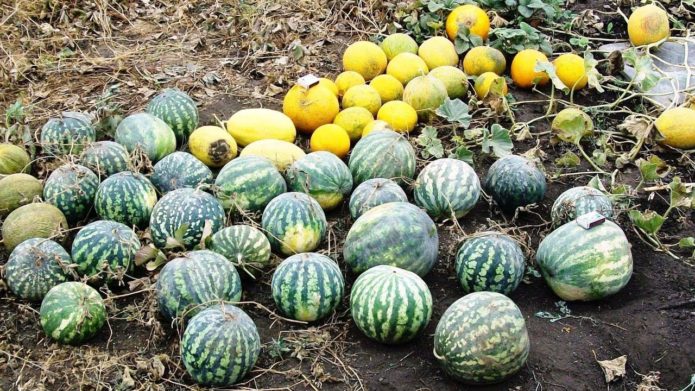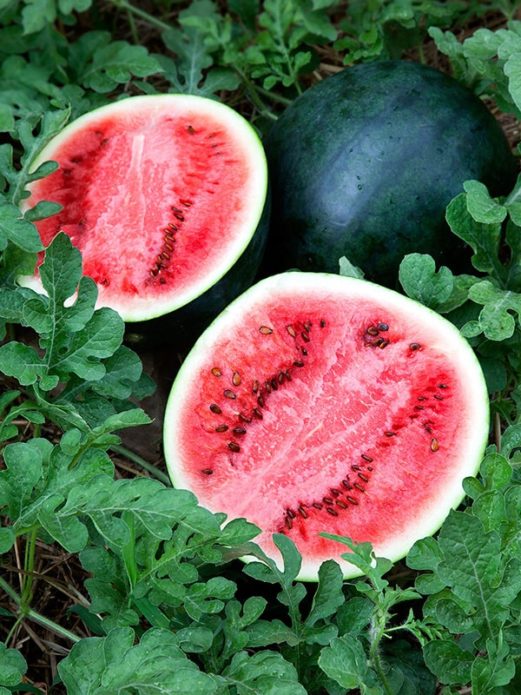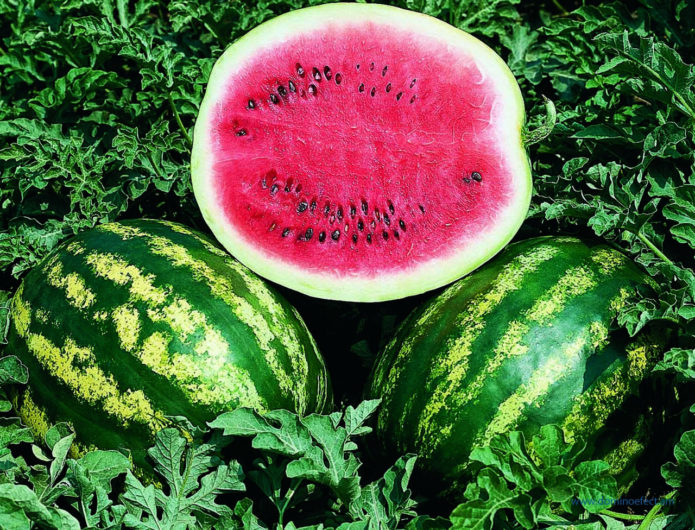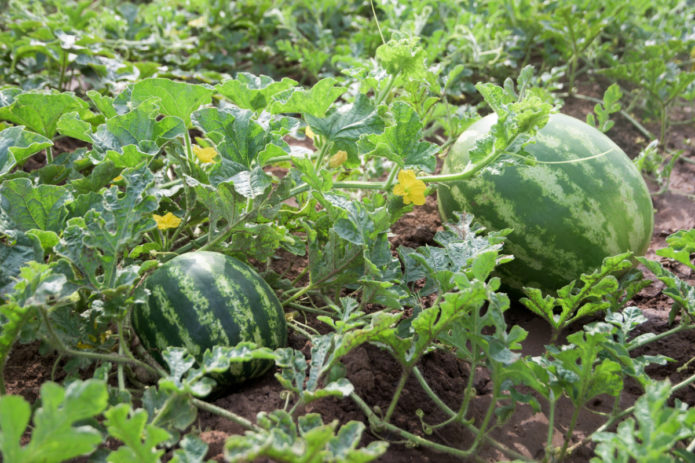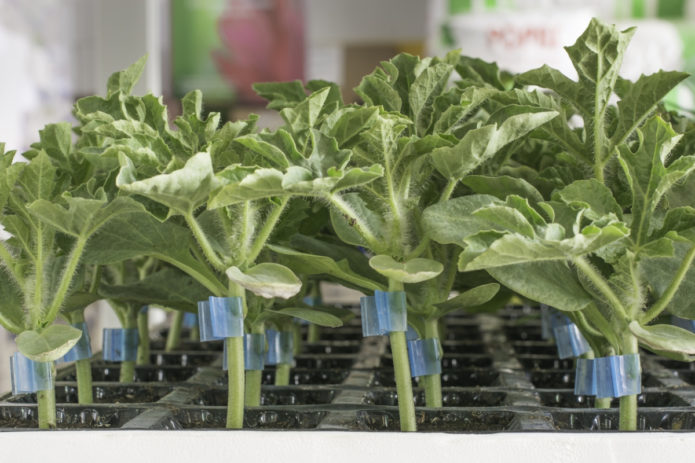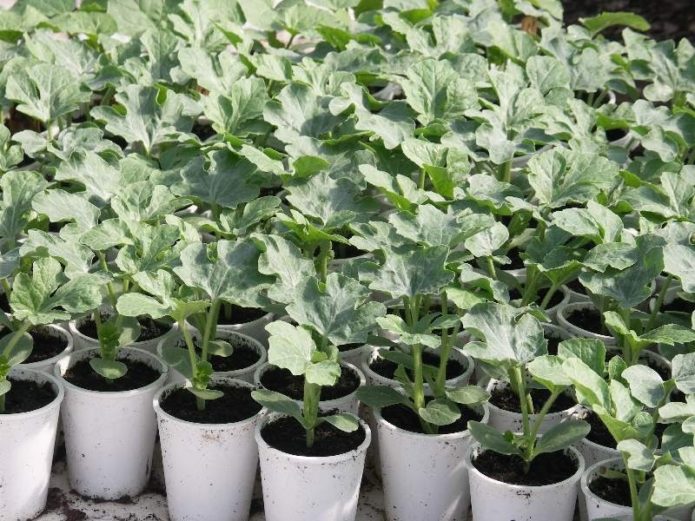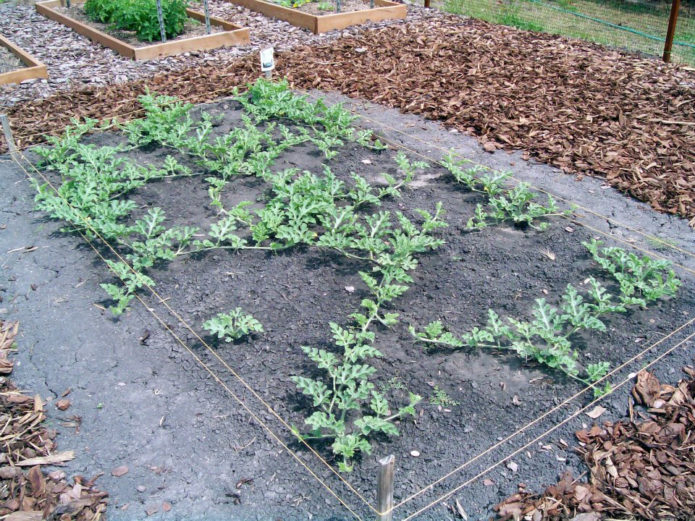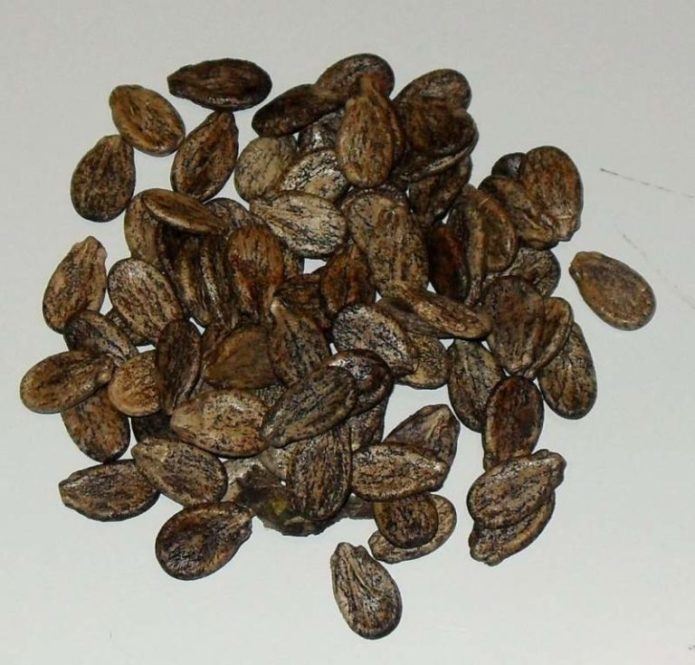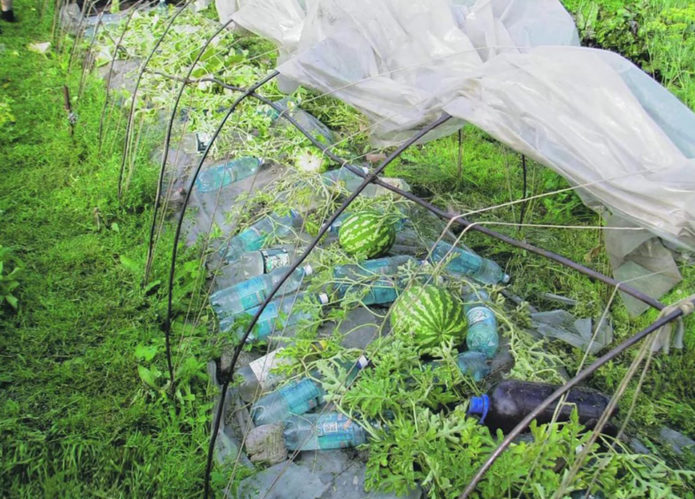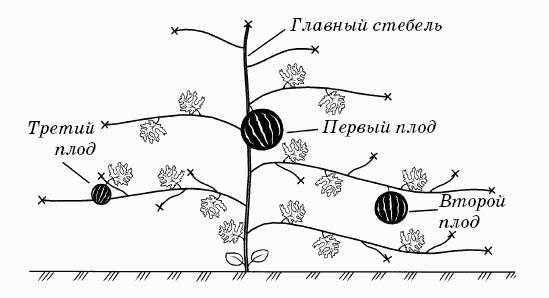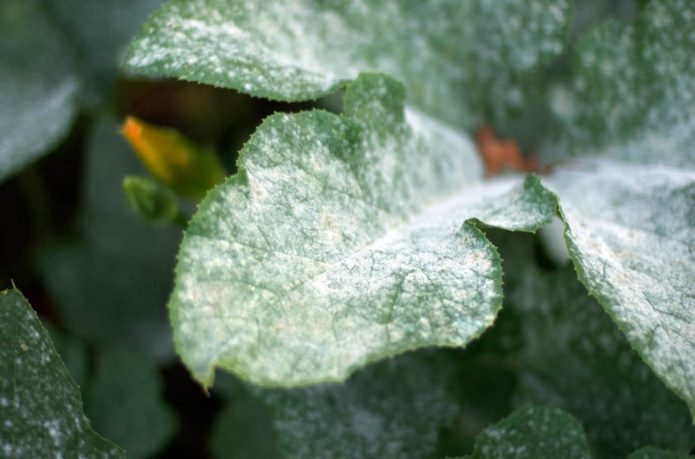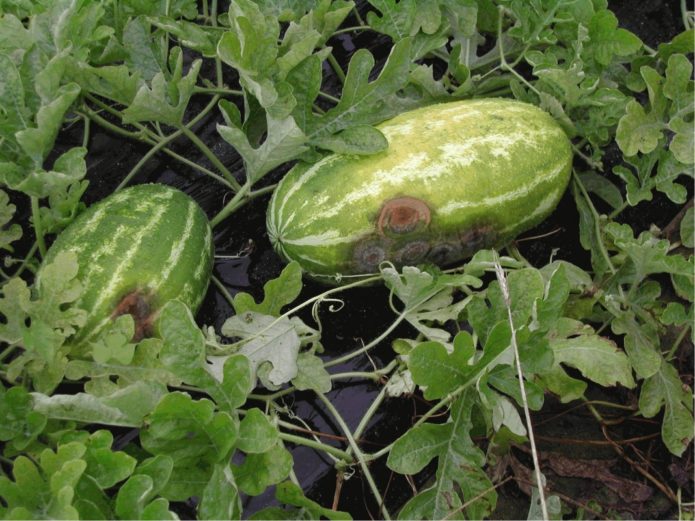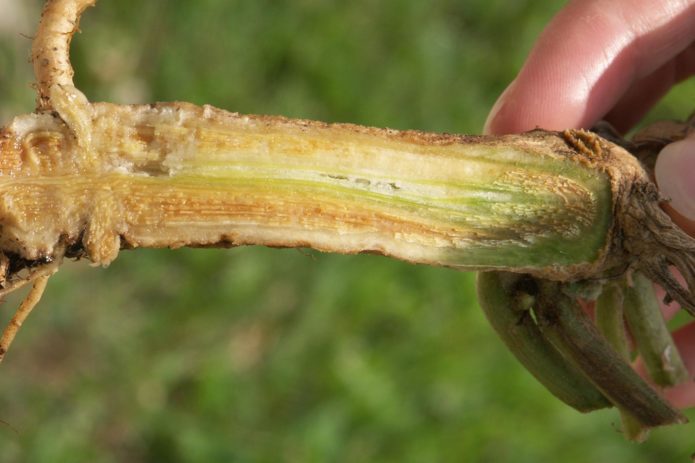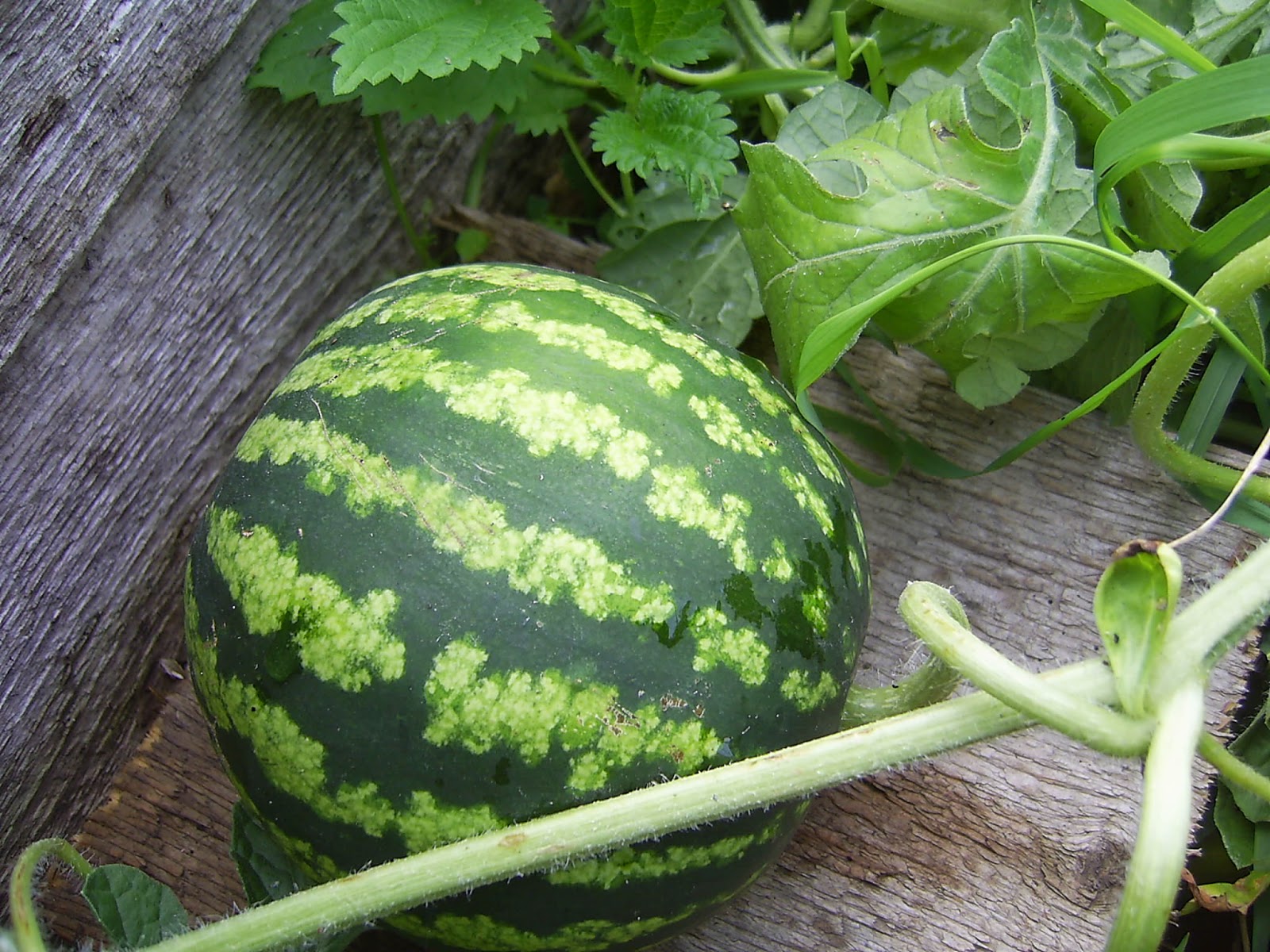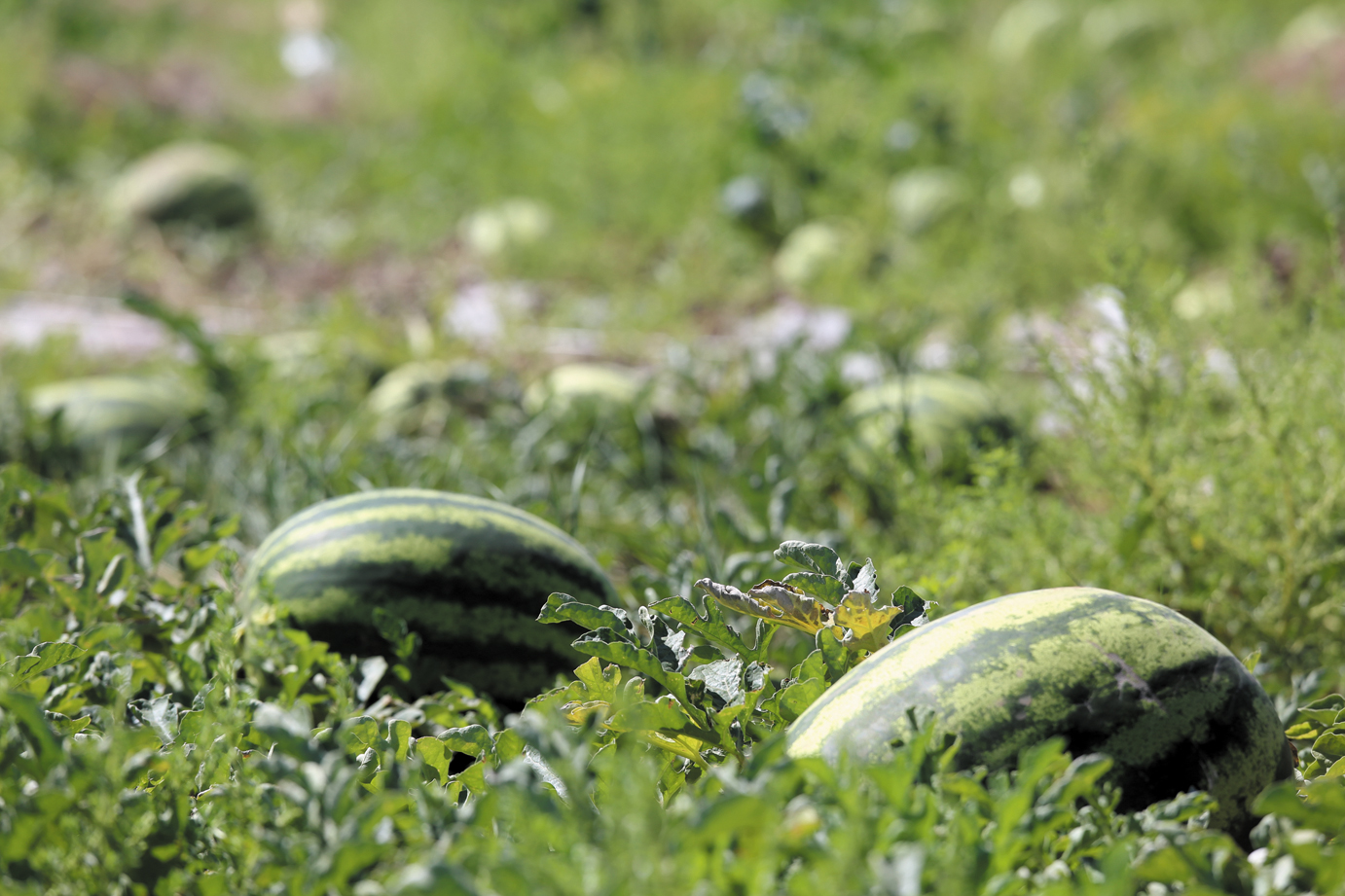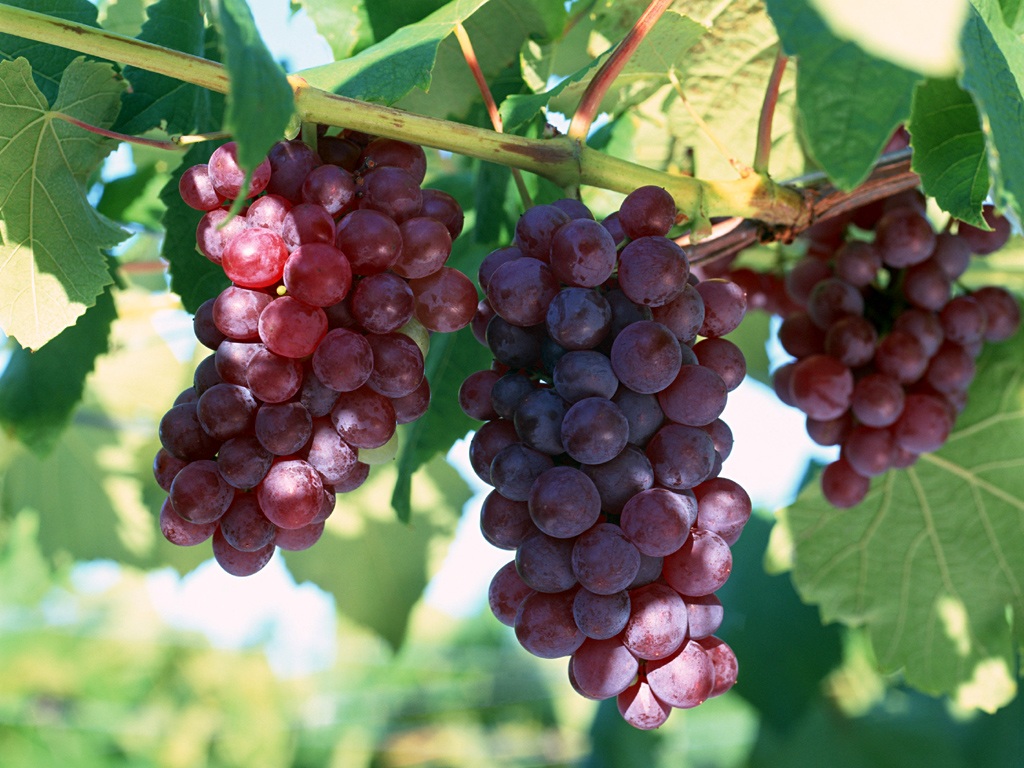Watermelon has always been considered a giant southern berry, and few realize that 300 years ago they knew how to grow it in the Moscow region. True, then it did not receive mass distribution, since the lesson was not easy. Now, with the advent of new varieties and the development of technologies, these berries in central Russia have ceased to be exotic.
Content
Is it possible to grow a watermelon in the center of Russia in the open field
The sweetest watermelons, of course, come from hot regions. The striped berry feels good in the southernmost regions of Russia and even in the south of the Saratov region. And Kamyshinsky watermelons (Volgograd region) are not very much inferior in taste to Astrakhan ones. It is unrealistic for the residents of the center of Russia to reach this quality, but good harvests of sweet berries are quite accessible to enthusiasts. Sometimes it even turns out to grow a watermelon by sowing seeds directly into the garden, but it is safer to first prepare seedlings in the apartment.
Watermelons are also planted in greenhouse conditions, but, of course, real delicacies must ripen under the sun.
Knowing that watermelons are from Africa, it is easy to understand that the most important thing for them is the high air temperature, and moisture, oddly enough (after all, it is almost entirely composed of water) is secondary. Water, of course, watermelon needs, but it has powerful roots that are able to find it drop by drop everywhere. But lighting is necessary: even in partial shade, the plant will suffer, it will tie the fruits, but they will not be sweet.
It may seem surprising, but a watermelon normally tolerates short cold snaps (not frost, of course, but low positive temperatures). Almost any soil is suitable for it, but it is better that it is nutritious and neutral. Based on this, it is clear that it is possible to grow watermelons without shelter in the central part of Russia, but this is a little risky business, and its success depends to a large extent on how good the weather turns out to be, whether it is warm enough.
Watermelon varieties for the middle strip
There are varieties of watermelons of different ripening periods. Of course, late-ripening (Ikar, Holodok, etc.) should not be planted in the middle lane, mid-ripening in unprotected soil is also risky, you must choose from the early ones. If you turn to the State Register of the Russian Federation, it turns out that he is not very generous in recommendations for the middle lane, but enthusiasts plant both those varieties that are intended for more southern territories, and those that have not yet found their place in the official document.
Most often, varieties are planted in open ground:
- Ogonyok is a well-known early maturing variety. Fruits are small, weighing about 2 kg, excellent taste. Outwardly, almost without stripes, the bark is dark green. The pulp is tender, sweet, the seeds are small.
- Sugar Baby (Suga Baby) is an ultra-early ripening cold-resistant variety with small fruits that rarely grow more than 1 kg. Appearance - ordinary watermelon, excellent taste, very small seeds. These watermelons are also grown by farmers, since the fruits of the variety can withstand transportation well. Sugar baby can even grow in Siberia. It is used for fresh consumption, but surplus crops can also be salted.
- Trophy F1 - one of the earliest ripening hybrids, gives very large fruits of a wide-elliptical shape, yellowish-green in color with dark wide stripes. The taste is considered excellent, the yield is high. The fruits are well stored and transported normally.
- Crimson Sweet is a recent cultivar but quickly gained popularity. A variety originally from France, ultra-early ripening, large-fruited. Fruits are spherical, striped, weighing up to 10 kg, very sweet, the taste is considered excellent. The variety is distinguished by drought and disease resistance, transportability and long-term storage of the crop.
In addition to these varieties, beginners for training can try the relatively unpretentious Victoria and Skorik varieties.
Agricultural technology for growing watermelons in central Russia
This is not to say that you will have to constantly work on the watermelon beds, watermelons will grow almost without the intervention of the owner, but it is worth preparing for surprises caused by the unpredictability of the weather.
Preparing the garden for planting watermelon
To plant a watermelon, you need to select the most lighted garden bed, warmed by the sun and protected from the winds. Consideration should be given to the large feeding area of the bush: the external small dimensions should not deceive, the plant roots spread far. In the middle lane, it is better to choose a small hill, where neither cold air nor excess moisture accumulates.
Cabbage, peas, onions, garlic are optimal as precursors of watermelon. He has no place after nightshades, and they also do not plant a watermelon for more than 2 years in a row in the same garden.
When digging, sand must be added to clay soil, chalk or another deoxidizing agent (sand per 1 m2 you may need a bucket, chalk - a couple of handfuls). You can't take fresh manure under a watermelon, but good humus is 5-8 kg per 1 m2 - the main fertilizer for him. Organic matter is brought in in the fall with deep digging of the beds, and in the spring, shortly before planting seedlings or sowing seeds, when processing with a heavy rake, add 30-40 g of superphosphate and a couple of handfuls of ash.
Watermelon also respects magnesium micronutrient fertilizers: up to 5 g per 1 m2 of any magnesium salt will increase the yield and add taste.
Growing seedlings
Seedling cultivation in the middle lane is preferable. Preparing seedlings in an apartment is not difficult, but enough light is required. Therefore, those who have a greenhouse grow seedlings there. It does not grow for long; within a month after sowing the seeds, it can be transferred to the garden bed. And since frosts are possible in the middle zone at the beginning of summer, a watermelon is planted in unprotected soil only on June 5-10. This means that the seeds must be sown in pots at the very beginning of May.
Seeds are sown directly into individual pots: picking a watermelon is categorically contraindicated. The depth of the containers is at least 10 cm, the volume is from 300 ml. Better to use medium-sized and larger peat pots. The soil is breathable, fertile. Drainage is placed at the bottom of the pots, and only then is the soil.
Watermelon seeds are stored for many years; their preparation consists in calibration and disinfection with potassium permanganate. Daily hardening in the refrigerator will not hurt. A watermelon is sown to a depth of about 3 cm, after which the crops are watered and sprinkled with a layer of dry sand (3-5 mm).At room temperature, seedlings appear in about a week or a little later.
The first few days, the seedlings are kept at a temperature no higher than 16-18aboutC, then - about 22aboutHappy and 18aboutC at night. Lighting should be good, light is required at least 12 hours a day. Watering infrequently, only at the root. Top dressing is optional, but if growth is inhibited, you can water the seedlings with an ash solution. It is hardened 7-10 days before planting in the ground. Good quality seedlings have a strong short stem and 4–5 leaves.
Planting seedlings in the garden
Seedlings are planted when it gets warmer at night 8aboutC. Otherwise, if it outgrows, it can only be landed under a temporary shelter. In the open ground, watermelons are planted, giving them space: the densest planting is 70 x 50 cm, but for normal growth it is better to use a 100 x 70 cm scheme (after all, at home, on a real melon, each bush is given an area of at least 1.5 x 1 , 5 m).
Planting seedlings is carried out according to the usual algorithm: digging a hole, placing a peat pot with a slight deepening in it, watering it with warm water. However, there are two nuances for watermelon:
- Even in the case of a well-prepared bed, a handful of ash is added to each hole.
- The soil is mulched not with peat or humus, as in the case of most plants, but a centimeter layer of sand is poured around the bush.
Sowing seeds in the garden
Early ripening varieties of watermelon can be grown in the middle lane and without preliminary preparation of seedlings. But the seeds are sown in the ground only after it warms up to at least 15aboutC. Usually it is the end of May. As long as the seeds sprout, the possibility of frost return will pass. It is worth sowing dry seeds in the garden so that they do not die in the event of an unexpected cold snap. Sow in pairs, then remove excess seedlings.
In the middle lane, it is better to build a so-called "smart bed" for watermelons, as they did back in Peter's times. When digging, an increased amount of organic matter is introduced into the soil, which was learned many years ago. Now the bed is covered in advance for warming up with a black film, and the sowing is carried out in a slot (this can be done with planting seedlings). The film is not removed all summer, and in case of an unexpected drop in temperature, they also cover the bed with non-woven materials.
Features of caring for watermelon outdoors in the middle lane
If in the south, planting melon, they almost forget about it, in cool regions you have to monitor the weather, protecting watermelons from cold weather, and in the case of prolonged torrential rains - from excess moisture.
Watering
Watermelon does not need frequent watering. The moist soil under the bushes should be during the period of intensive plant growth and until the formation of ovaries. Waterlogging is excluded. Watermelons are watered only at the root in the evening with water warmed up in the sun. Until the bushes grow, watering is accompanied by loosening and destruction of weeds; mature plants themselves inhibit weed growth.
When the fruits reach the size of a walnut, watering is stopped. In an adult watermelon, the roots penetrate to a meter depth, where they themselves take as much water as they need for fruit growth. Watering at this time, including due to heavy rains, only worsens the taste of the berries.
Top dressing
In fertile soil, watermelons are almost never fed. This is especially true of nitrogen fertilizers, since the crop tends to accumulate them in fruits. 10-15 days after planting the seedlings, it is fed with infusion of mullein and wood ash, immediately after flowering, the feeding is repeated. Watermelons with fruits are not fertilized: the plant itself will find the necessary nutrients in the soil.
Bush formation
The correct formation of a plant is perhaps the most difficult thing to learn.Firstly, many gardeners grow watermelons in a vertical culture, on a trellis, but this is more often done in greenhouses. In the open field, the lashes are allowed to grow freely on the ground, but periodically (until the formation of ovaries the size of a nut) they are shifted so that they do not intertwine with each other. Secondly, excess shoots should be removed in time: the watermelon should not waste food on the growth of excess green mass. And even some of the ovaries sometimes have to be removed.
All operations are performed in sunny weather, so that the wounds on the shoots dry out quickly.
There are various options for shaping the watermelon bush and rationing the crop. This is a whole science that allows you to keep a watermelon bush with fruiting only on the main stem, leaving short side shoots, and with fruiting on the lateral and pinching the main shoot. Not all the nuances are necessary to know, and for an ordinary amateur gardener, it is enough to understand the following:
- it is important to normalize when the fruits grow to the size of a chicken egg;
- no more than 5–6 fruits should be left on the bush: with the best nutrition, the plant will not last as much;
- on each side shoot, no more than one watermelon is left for large-fruited varieties and two for small-fruited;
- when the fruits grow from a fist, a shoot is pinched above them, leaving 4–5 leaves after the fruit.
And still, even after thorough thinning and pinching, not only does the fruit grow on the bushes, but also new stepchildren appear. In order not to weaken the plant, they are broken out weekly, but they do it carefully: during the period of fruit growth, it is undesirable to touch and shift the lashes. When the watermelons become more or less large, planks are placed under them so that diseases, cold, and slugs do not crawl onto them from the wet earth.
Treatment against diseases and pests
Watermelon is a rather unpretentious crop, under optimal conditions it very rarely gets sick or suffers from pests, and in amateur gardens it is very rarely sprayed, even for preventive purposes. But in the middle lane, the weather is unpredictable and can provoke fungal diseases. To prevent them, you should use at least Bordeaux liquid or the preparations Fundazol or Decis. More often than other diseases, watermelons affect:
- Powdery mildew (especially often with waterlogging), manifested by white fluffy spots on the leaves, and subsequently on the shoots and fruits. Treatment is Bordeaux mixture.
- Anthracnose, which manifests itself as brownish spots on the leaves and fruits, turning into ulcers, is treated similarly.
- Fusarium is a disease that leads to wilting of both the leaves and the entire plant. At the very beginning of the disease, treatment is possible, for example, with Previkur.
- Mosaic is the most terrible disease, because it has a viral nature. Spots of various shapes of all shades of yellow appear on the leaves. At first, the disease can be slowed down by Karbofos, but neglected plants die.
The most common pests are melon aphids, wireworms, and ticks. Aphids are well scared away by infusions of tobacco dust and wood ash, wireworms are caught using baits (sweetened infusion of tomato tops or mustard). It is difficult to fight only with a spider mite: you have to use synthetic acaricides.
Video: melon in central Russia
Harvesting and storage
Overripe watermelons are practically not stored, and unripe watermelons are tasteless, so they should be removed on time. Unripe watermelons practically do not "reach" when lying down. The main signs of ripening watermelon are as follows:
- the fruit becomes shiny;
- the crust hardens and is not pressed through by the nail;
- the stalk dries up;
- on the side where the watermelon lay, a clearly distinguishable yellow spot is formed;
- when tapped, the sound becomes clear.
Watermelons are removed with a pruner along with the stalk.The berries are transported on a litter, preventing damage. Store in one layer at about 7aboutC and humidity 70–85%. However, virtually no watermelon will last longer than 3 months.
Reviews
In 2010. in my area near Moscow, without the use of any shelters, without a seedling method, I managed to grow a watermelon weighing 2 kg. 940 grams. In 2011. decided to continue the experience and on 03.09.2011. the weight of the watermelon was 3kg 900 grams. The taste of the berry turns out to be very decent, so far no particular difficulties have been noticed from leaving. It grows on my site on the south side of the house, the microclimate here is good, I don't use any fertilizers, however, a meter-long hole was made in the place where the watermelon grows several years ago and covered with a bunch of wood residues (twigs, carrot tops, tomato etc.). After tying 1-2 fruits, I remove the growth point in the lash…. I noticed that even when the night temperature dropped to 7 degrees, there were no signs of fungal diseases on the leaves.
Last year I grew my first watermelon weighing 900 grams. This year I planted 12 plants, planting pattern 0.8x1m. Planted with seedlings in the cotyledon phase, under plastic bottles 5-liter from under the water on May 10. This year's weather was not for melons. Constant rains, if not every day, then every other day is necessary, hence the high humidity. Result: my watermelons did not develop, they bloomed at the end of July, in mid-August two watermelons with a children's fist appeared, but they rotted.
In the Moscow region and to the north, of course, the watermelon month is July, and June the main thing is not to get frozen, this month is only for the rooting of seedlings. With the arrival of heat, the watermelon catches up well, the main thing is that the hybrids are early ripening.
Keep in mind that when the ovary is formed, the top of the lash must be pinched, leaving three leaves above the ovary. This is so that the fruit is larger (applies to both watermelon and melon). I planted a watermelon "Ogonyok" for a long time through seedlings, grew in open ground, though the summer was hot. The largest fruit was 2kg150g.
Watermelon was a Fire. Weighed - the weight of 2.3 turned out to be the first, the rest a little less. I left 3 watermelons on the bush. Ripe 2. A total of 5 ripe pieces were harvested. But for us Equated to the Far North is excellent). It's a pity I didn't think of taking a picture inside. The watermelon is deep red inside, sweet. At least sweeter than the store-bought one for sure!
And I like Suga Baby or sugar baby, watermelons are not very large, but very sweet and tasty.
Video: watermelons in the Republic of Mari El
It is possible to grow a watermelon in the climatic conditions of the middle lane, but with some effort. It also has to be lucky with the weather. The very technology of planting and care is no more complicated than the vegetables we are used to.
